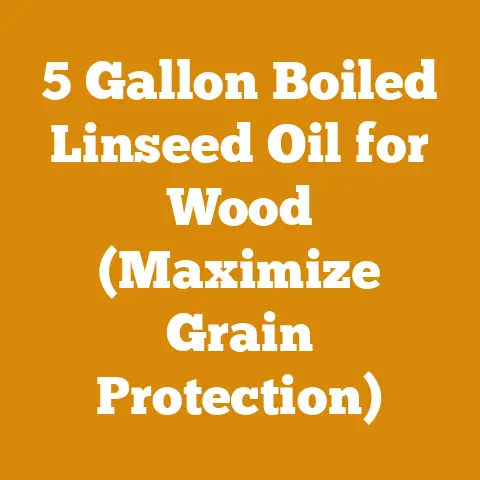Shed Roof Cabins: Cabin Frame Tips for Woodworkers (Pro Build Secrets)
Shed Roof Cabins: Cabin Frame Tips for Woodworkers (Pro Build Secrets)
Understanding the Allure of Shed Roof Cabins
Shed roof cabins offer a unique blend of simplicity and functionality. Their single-sloping roof design is not only aesthetically pleasing but also practical for water runoff and snow shedding. This design is often more cost-effective to build than traditional gable roofs, making it an attractive option for budget-conscious woodworkers. However, don’t be fooled by its simplicity; a well-constructed shed roof cabin frame requires careful planning, precise execution, and a solid understanding of material costs.
The Crucial First Step: Planning and Design
Before you even think about picking up a tool, meticulous planning is paramount. This stage lays the foundation for accurate cost estimation and efficient execution.
- Cabin Size and Layout: Determine the dimensions of your cabin. A larger cabin requires more materials and labor, directly impacting the overall cost. Consider the intended use of the cabin – is it a weekend retreat, a workshop, or a full-time residence? This will influence the size and layout requirements.
- Design Complexity: While shed roofs are generally simpler, variations exist. A simple rectangular design will be less expensive than a cabin with dormers or extensions.
- Local Building Codes and Permits: Research local building codes and permit requirements. Permits can add to the overall cost, and non-compliance can lead to costly rework.
- Foundation Type: The choice of foundation (slab, pier, or crawl space) significantly affects the cost. A slab foundation is often the most economical, while a crawl space provides access for plumbing and electrical work.
- Material Selection: This is a major cost driver. Choosing between different wood species, siding materials, and roofing options will have a substantial impact on the budget.
Decoding the Timber Puzzle: Material Costs
The heart of any cabin frame is the timber. Understanding the nuances of wood species, grades, and pricing is crucial for accurate cost estimation.
Wood Species: A Deep Dive
- Softwoods vs. Hardwoods: Softwoods like pine, fir, and cedar are generally more affordable and easier to work with, making them popular choices for cabin frames. Hardwoods like oak, maple, and walnut offer superior strength and durability but come at a higher price point.
- Regional Availability: The cost of wood varies significantly depending on your location. Locally sourced timber is often more affordable due to reduced transportation costs. For example, in the Pacific Northwest, Douglas fir is readily available and relatively inexpensive, while in the Southeast, pine is a common and affordable option.
- Grade and Quality: Lumber is graded based on its appearance and structural integrity. Higher grades (e.g., Select Structural) are more expensive but offer better strength and fewer imperfections. Lower grades (e.g., Construction Grade) are more affordable but may require more careful selection and treatment.
- Treated vs. Untreated Lumber: For ground contact and areas exposed to moisture, treated lumber is essential to prevent rot and insect infestation. However, treated lumber is more expensive than untreated lumber. Consider using naturally rot-resistant species like cedar or redwood for exterior applications to reduce the need for chemical treatments.
- Recycled and Reclaimed Wood: An increasingly popular option is using recycled or reclaimed wood. This can be a sustainable and cost-effective choice, offering unique character and reducing your environmental footprint. However, reclaimed wood may require more preparation and careful inspection to ensure structural integrity.
Current Timber Prices (Data-Driven Insights)
As of late 2023 and early 2024, timber prices have shown some volatility but are generally lower than the peak prices seen during the pandemic. Here’s a breakdown of average prices for common lumber species:
- Pine (SPF – Spruce-Pine-Fir): \$350 – \$500 per thousand board feet (MBF)
- Douglas Fir: \$400 – \$600 per MBF
- Cedar: \$600 – \$800 per MBF
- Oak: \$800 – \$1200 per MBF
Note: These prices are averages and can vary depending on location, supplier, and market conditions. It’s crucial to obtain quotes from local lumberyards for accurate pricing.
Data Source: Random Lengths Framing Lumber Composite Price (a widely used industry benchmark).
Example: Let’s say you’re building a 12′ x 16′ shed roof cabin frame. You estimate you’ll need approximately 1500 board feet of lumber. Using pine at \$400 per MBF, the lumber cost would be:
(1500 board feet / 1000) * \$400 = \$600
Beyond Lumber: Other Material Costs
Don’t forget to factor in the cost of other essential materials:
- Fasteners: Nails, screws, bolts, and connectors can add up quickly. Use high-quality fasteners designed for exterior use to prevent corrosion.
- Roofing Materials: Shingles, metal roofing, or other roofing materials are a significant expense. Consider the longevity and maintenance requirements of different options.
- Siding Materials: Wood siding, vinyl siding, or metal siding each have different costs and aesthetic qualities.
- Insulation: Proper insulation is crucial for energy efficiency and comfort. Consider fiberglass batts, spray foam, or rigid foam insulation.
- Windows and Doors: These can range from budget-friendly to high-end, impacting both the cost and the aesthetic appeal of the cabin.
The Human Element: Labor Costs
If you’re not undertaking the entire project yourself, labor costs will be a significant factor.
DIY vs. Hiring Professionals
- DIY: If you have the skills and time, DIY can save you a substantial amount on labor costs. However, be realistic about your abilities and the time commitment involved.
- Hiring Professionals: Hiring experienced carpenters and contractors ensures quality workmanship and can expedite the project. However, labor costs can be substantial.
Understanding Labor Rates
- Hourly Rates: Carpenter hourly rates typically range from \$30 to \$70 per hour, depending on experience and location.
- Project-Based Bids: Some contractors offer project-based bids, which can provide more cost certainty. However, ensure the bid includes a detailed scope of work and materials list.
- Factors Affecting Labor Costs: The complexity of the design, the accessibility of the site, and the time of year can all affect labor costs.
Example: If you hire a carpenter for 40 hours at \$50 per hour, the labor cost would be:
40 hours * \$50/hour = \$2000
Cost-Saving Strategies for Labor
- Phased Approach: Break the project into smaller phases and tackle some of the simpler tasks yourself, such as demolition or site preparation.
- Negotiate Rates: Obtain multiple bids from different contractors and negotiate rates.
- Material Procurement: You can often save money by purchasing materials yourself, rather than having the contractor mark them up.
- Clear Communication: Clear communication with your contractor can prevent misunderstandings and costly rework.
Tooling Up: Equipment Costs
Whether you’re a seasoned woodworker or a beginner, you’ll need the right tools for the job.
Essential Tools for Cabin Frame Construction
- Chainsaw: For felling trees (if you’re sourcing your own lumber) and cutting large timbers.
- Circular Saw: For cutting lumber to size.
- Miter Saw: For making precise angle cuts.
- Drill/Driver: For drilling holes and driving screws.
- Impact Driver: For driving large fasteners.
- Level: For ensuring accurate alignment.
- Square: For marking accurate angles.
- Measuring Tape: For accurate measurements.
- Hammer: For driving nails.
- Safety Gear: Safety glasses, ear protection, gloves, and a hard hat are essential.
Renting vs. Buying Tools
- Renting: Renting specialized tools like chainsaws or power planers can be cost-effective if you only need them for a short period.
- Buying: If you plan to undertake multiple woodworking projects, investing in quality tools is a worthwhile investment.
- Used Tools: Consider purchasing used tools to save money. However, inspect them carefully to ensure they are in good working condition.
Tool Maintenance Costs
Don’t forget to factor in the cost of tool maintenance:
- Sharpening: Chainsaw chains and saw blades need to be sharpened regularly.
- Lubrication: Power tools require regular lubrication.
- Repairs: Tools can break down and require repairs.
- Replacement Parts: Replacement parts can be expensive.
Example: A chainsaw chain sharpening can cost \$10-\$20. A new chainsaw chain can cost \$30-\$50.
Building permits are often required for cabin construction. Failing to obtain the necessary permits can result in fines and delays.
Researching Local Requirements
- Building Codes: Familiarize yourself with local building codes. These codes specify minimum standards for construction and safety.
- Zoning Regulations: Zoning regulations dictate what types of structures are allowed in certain areas.
- Environmental Regulations: Environmental regulations may restrict construction near wetlands or other sensitive areas.
- Permit Fees: Permit fees vary depending on the size and complexity of the project.
Budgeting for Permits
- Contact Local Authorities: Contact your local building department or planning department to obtain information on permit requirements and fees.
- Factor in Time: The permit process can take several weeks or even months. Factor this time into your project schedule.
- Professional Assistance: Consider hiring a professional to assist with the permit process.
Example: A building permit for a small shed roof cabin might cost \$500-\$1500.
The Devil is in the Details: Hidden Costs
It’s easy to overlook some of the smaller costs associated with cabin construction.
Site Preparation
- Clearing: Clearing the building site can involve removing trees, brush, and debris.
- Grading: Grading the site to ensure proper drainage.
- Excavation: Excavating for the foundation.
- Access Roads: Building or improving access roads to the site.
Waste Disposal
- Construction Debris: Disposing of construction debris can be costly.
- Recycling: Consider recycling materials to reduce waste disposal costs.
Contingency Fund
- Unexpected Expenses: It’s always a good idea to set aside a contingency fund for unexpected expenses. A good rule of thumb is to allocate 10-15% of your total budget for contingencies.
Case Study: Budgeting for a 12′ x 16′ Shed Roof Cabin
Let’s walk through a hypothetical case study to illustrate how to budget for a 12′ x 16′ shed roof cabin frame.
Assumptions:
- Location: Rural area with moderate timber prices.
- DIY Labor: The homeowner will perform most of the labor.
- Lumber: Pine (SPF) at \$450 per MBF.
- Foundation: Slab foundation.
- Roofing: Asphalt shingles.
- Siding: Wood siding.
Cost Breakdown:
- Lumber (1500 board feet): \$675
- Fasteners: \$100
- Roofing Materials: \$500
- Siding Materials: \$400
- Insulation: \$200
- Windows and Doors: \$500
- Foundation Materials (concrete, rebar): \$300
- Permits: \$500
- Tool Rentals: \$100
- Site Preparation: \$200
- Waste Disposal: \$100
- Contingency (10%): \$367.50
Total Estimated Cost: \$3,942.50
Note: This is just an estimate. Actual costs may vary depending on your specific circumstances.
Pro Build Secrets: Tips for Cost Optimization
- Design Simplification: Simplify the design to reduce material and labor costs.
- Material Sourcing: Shop around for the best prices on materials. Consider buying in bulk or purchasing directly from sawmills.
- DIY Labor: Perform as much of the labor as possible yourself.
- Salvaged Materials: Utilize salvaged or reclaimed materials.
- Efficient Cutting: Cut lumber efficiently to minimize waste.
- Weather Protection: Protect materials from the weather to prevent damage and waste.
- Accurate Measurements: Take accurate measurements to avoid costly mistakes.
- Proper Planning: Plan the project thoroughly to avoid delays and rework.
- Negotiate Prices: Negotiate prices with contractors and suppliers.
- Energy Efficiency: Invest in energy-efficient materials and construction techniques to reduce long-term operating costs.
Chainsaw Mastery: Cutting Your Own Timber
If you have access to a wooded area, you might consider felling your own trees to save on lumber costs. However, this requires skill, experience, and the right equipment.
Chainsaw Selection and Maintenance
- Chainsaw Size: Choose a chainsaw that is appropriate for the size of the trees you will be felling.
- Safety Features: Ensure the chainsaw has safety features like a chain brake and anti-vibration system.
- Chain Sharpening: Sharpen the chain regularly to ensure efficient cutting.
- Lubrication: Lubricate the chain and bar regularly.
- Fuel Mixture: Use the correct fuel mixture.
Felling Techniques
- Safety First: Always wear safety gear and follow safe felling practices.
- Assess the Tree: Assess the tree for lean, wind direction, and potential hazards.
- Notch Cut: Make a notch cut on the side of the tree in the direction you want it to fall.
- Back Cut: Make a back cut opposite the notch cut, leaving a hinge.
- Wedges: Use wedges to help direct the fall of the tree.
Milling Your Own Lumber
- Portable Sawmill: Consider renting or purchasing a portable sawmill to mill the logs into lumber.
- Lumber Drying: Dry the lumber properly to prevent warping and cracking.
Note: Felling trees and milling lumber can be dangerous. If you are not experienced, consider hiring a professional.
Firewood Preparation: A Byproduct of Cabin Construction
Often, clearing the site for your cabin construction will yield a significant amount of wood suitable for firewood. Preparing your own firewood can save you money on heating costs.
Firewood Species
- Hardwoods: Hardwoods like oak, maple, and ash provide more heat and burn longer than softwoods.
- Softwoods: Softwoods like pine and fir are easier to ignite but burn faster.
Firewood Processing
- Cutting: Cut the wood into manageable lengths.
- Splitting: Split the wood to speed up drying.
- Stacking: Stack the wood in a dry, well-ventilated area.
- Drying: Allow the wood to dry for at least six months, preferably a year.
Firewood Costs (Market Rates)
- Cord of Firewood: A cord of firewood typically costs \$200-\$400, depending on the species and location.
Example: If you process 2 cords of firewood from your cabin construction site, you could save \$400-\$800 on heating costs.
Budget Management: Keeping Your Project on Track
- Create a Detailed Budget: Create a detailed budget that includes all anticipated costs.
- Track Expenses: Track your expenses regularly to ensure you are staying within budget.
- Adjust as Needed: Be prepared to adjust your budget as needed.
- Prioritize Spending: Prioritize spending on essential items.
- Seek Professional Advice: Seek professional advice from contractors, suppliers, or financial advisors.
Conclusion: Building Your Dream Cabin on a Budget
Building a shed roof cabin frame is a rewarding but challenging project. By understanding the various cost factors involved, planning carefully, and implementing cost-saving strategies, you can create your dream cabin without breaking the bank. Remember to prioritize safety, adhere to local building codes, and seek professional advice when needed. With careful planning and execution, your shed roof cabin can become a reality, providing a cozy and comfortable retreat for years to come.
Actionable Takeaways and Next Steps
- Start Planning: Begin by defining your cabin’s size, layout, and intended use.
- Research Local Codes: Investigate local building codes and permit requirements.
- Gather Quotes: Obtain quotes from local lumberyards and contractors.
- Create a Budget: Develop a detailed budget that includes all anticipated costs.
- Prioritize Safety: Always prioritize safety when working with tools and equipment.
- Seek Advice: Don’t hesitate to seek advice from experienced woodworkers or contractors.
Embarking on this journey requires careful planning and execution, but the reward of a self-built shed roof cabin is well worth the effort. Now, armed with this knowledge, go forth and create your own haven of comfort and tranquility!






